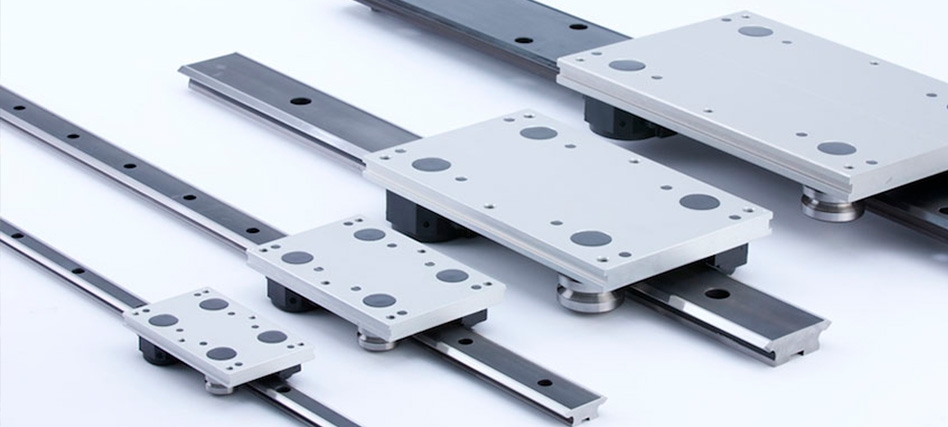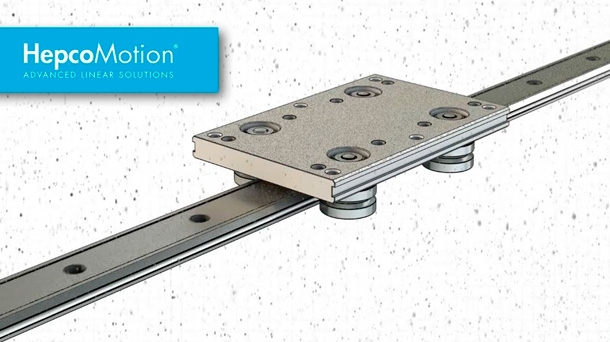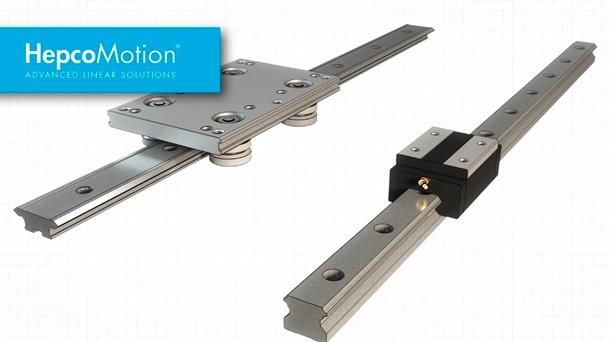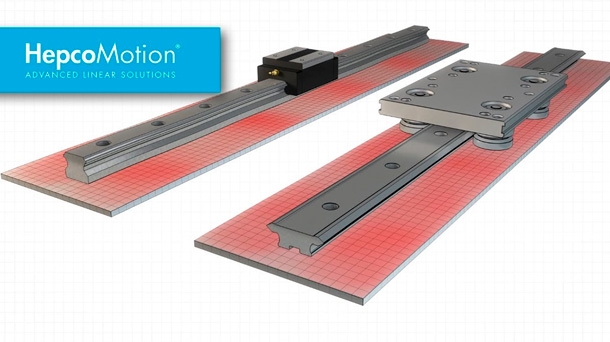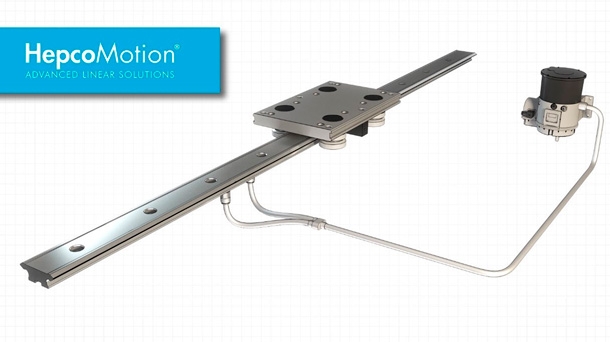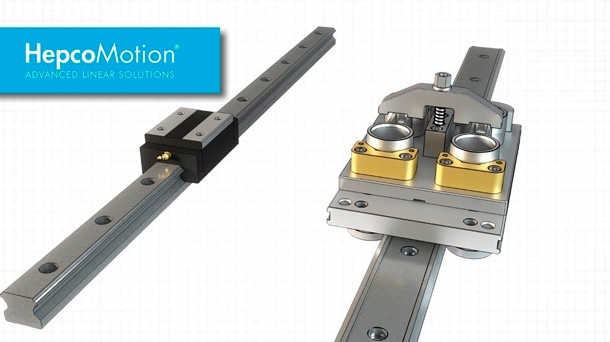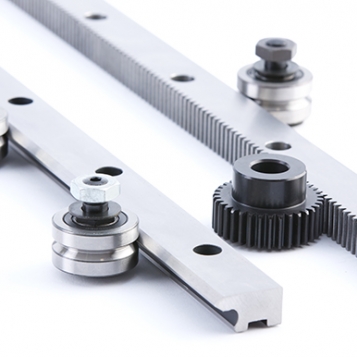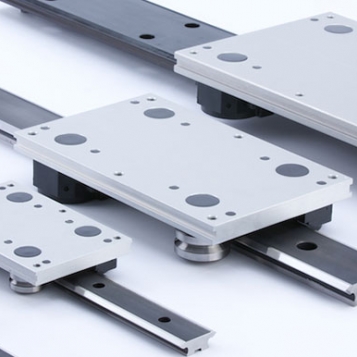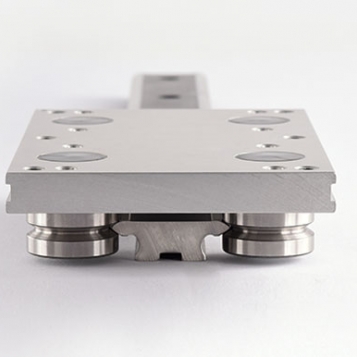Supplying a constant source of lubrication is a key consideration for any design engineer; Hepco has therefore created an animation dedicated to showing how this can be managed using standard Hepco options. This animation shows the different possibilities of lubrication delivery available with Hepco’s V guides, such as the automated bleed lubrication system which delivers lubricant directly to the contact surface between the slide and the V bearings. The animation shows a cross section of the slide rail with a bleed lubrication hole from the underside, joining with a perpendicular channel which is routed through the V face.
Here, lubricant is pumped up and out at right angles directly to the running face of the bearings and slide – exactly where it is needed. The lubrication source supplies grease constantly, and being remotely located, the system does not need to be stopped at regular intervals for re-lubrication, reducing downtime and increasing machine efficiency.
Ball rail re-lubrication intervals are far shorter than V guide systems, with frequent maintenance and downtime required to keep them running. The animation shows how ball rails will eventually purge any lubrication from within the block, leading to catastrophic failure if not re-lubricated regularly. Re-lubrication intervals are far longer for the GV3 system, and it requires less lubricant to work effectively.
The animation also showcases the ability of GV3 to run completely dry - a requirement for some food, medical and scientific applications. A cross section of the V bearing shows the internal ball bearings continuing to work perfectly well, moving the GV3 up and down the guide without lubrication, and problem free.




